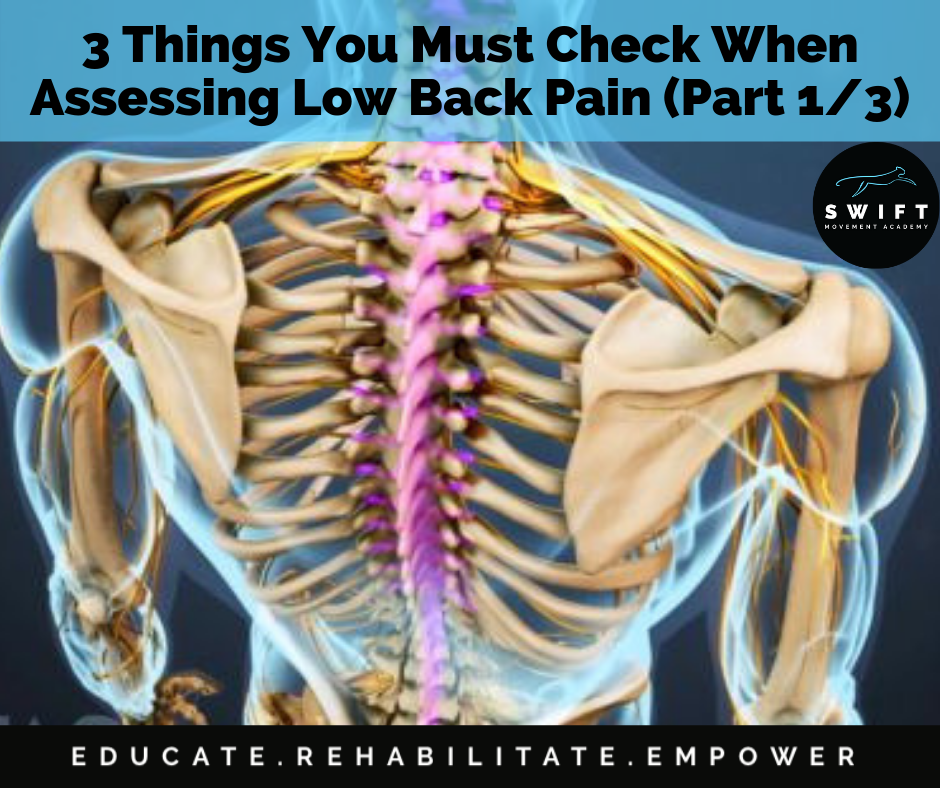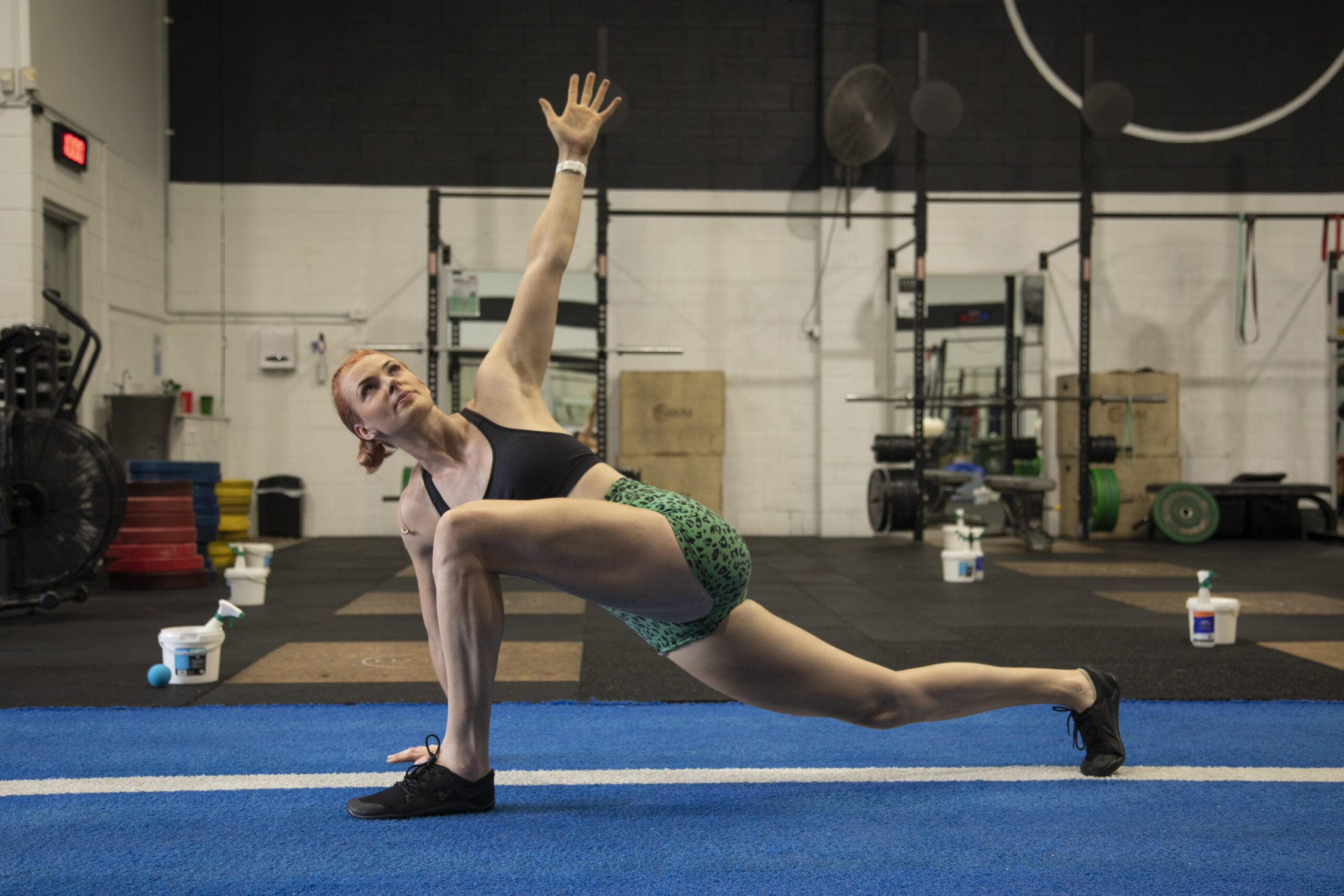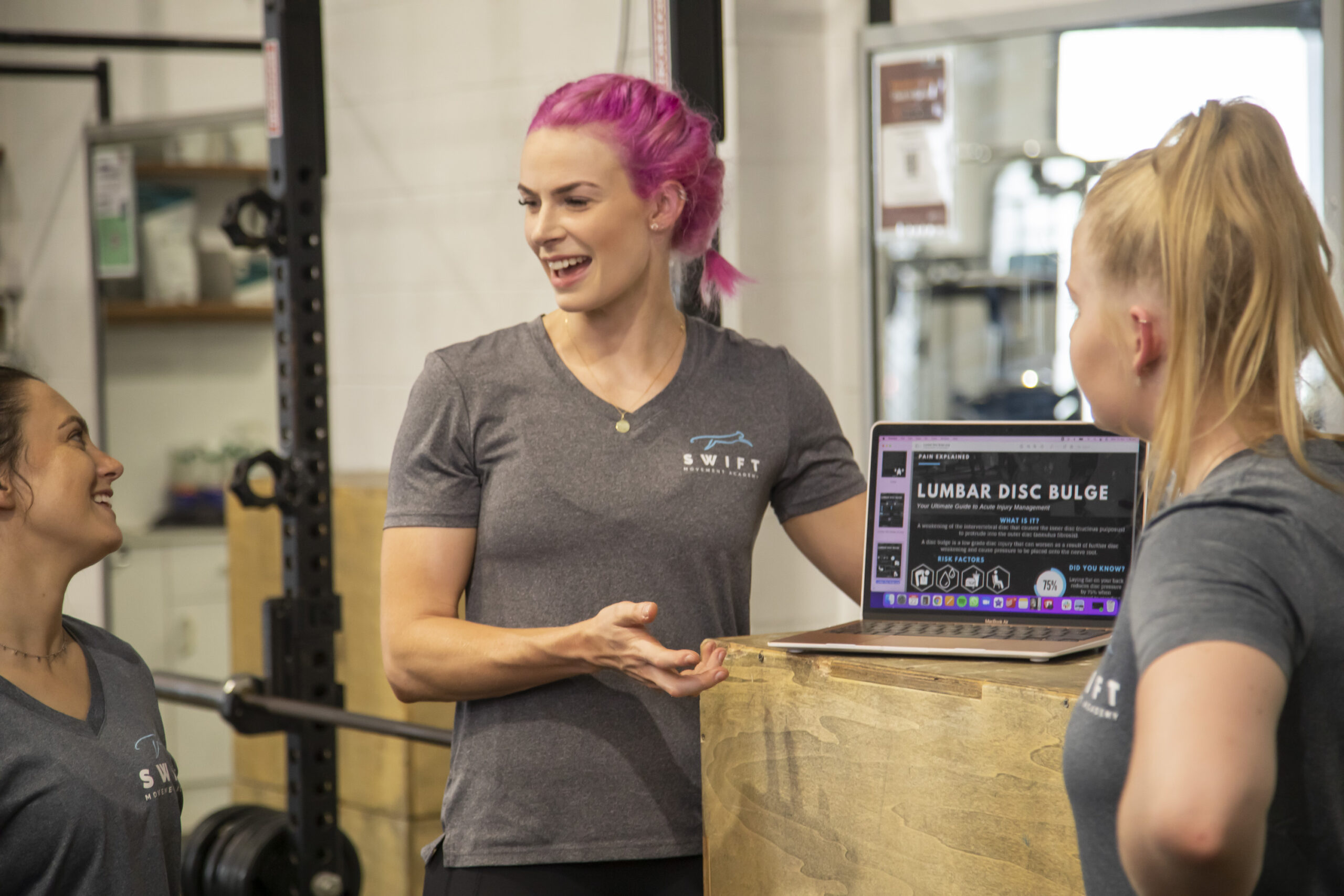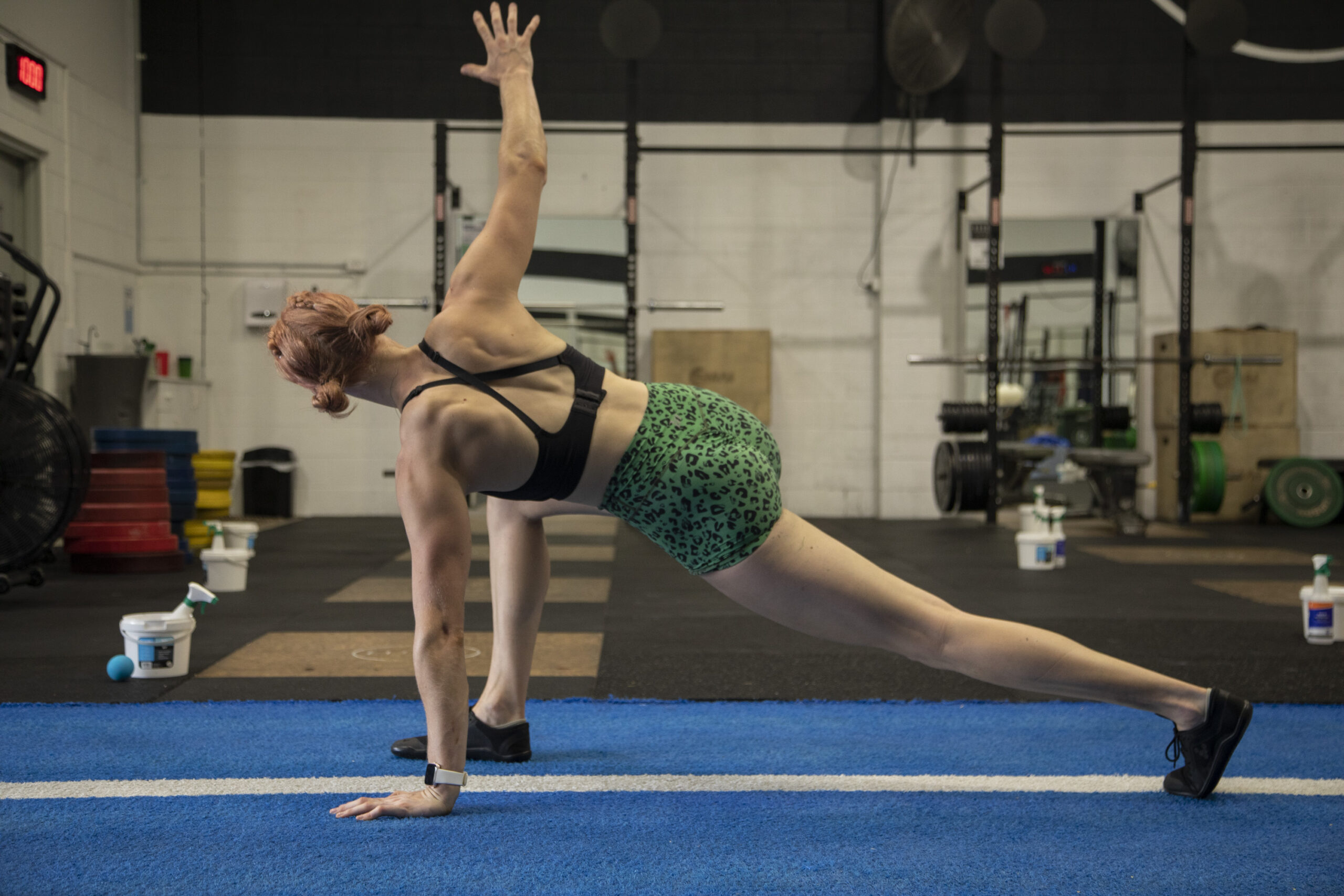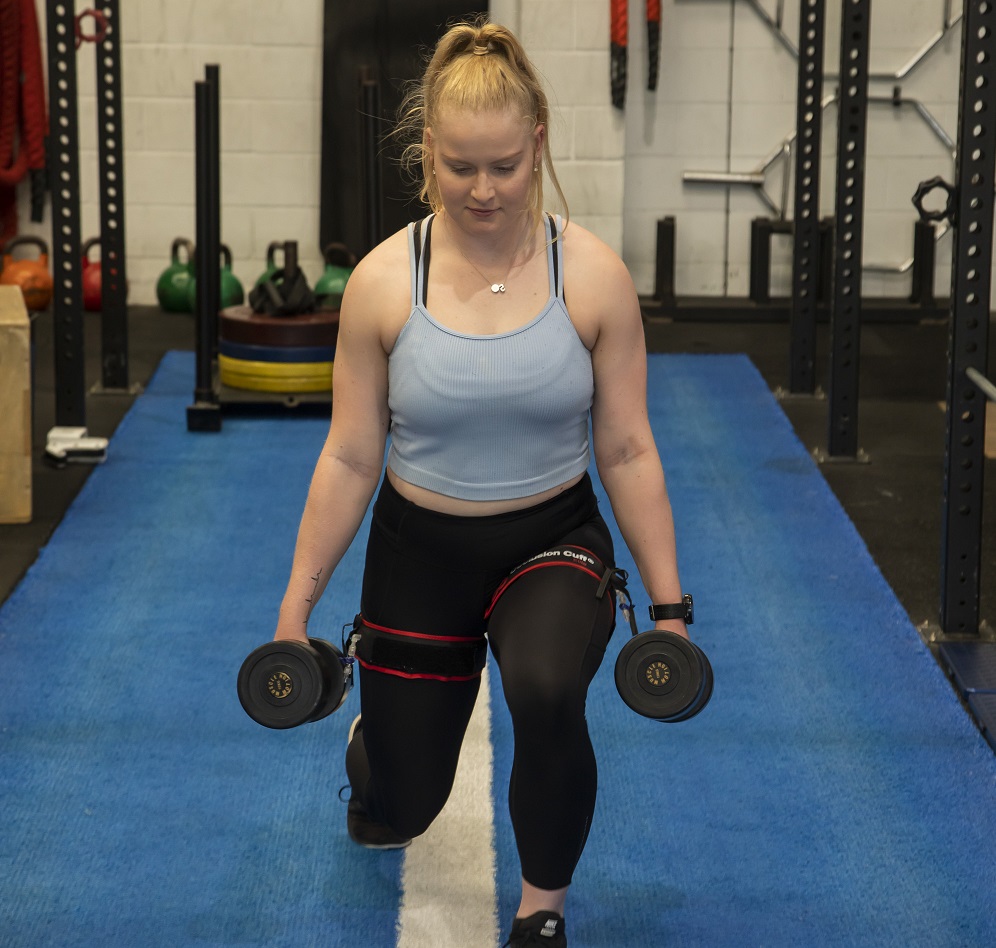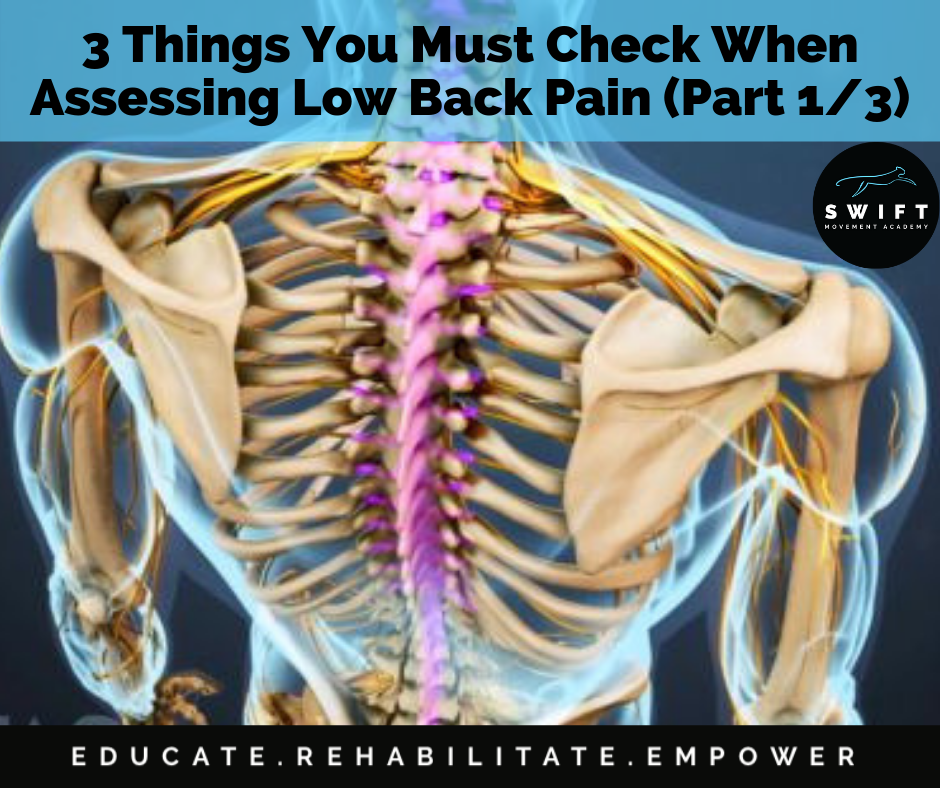
Leading on from the previous blog on “Low Back Pain – The Cause or the Symptom?” we know the lower back is often just the symptom but NOT THE CAUSE of pain. So what is?
While low back pain can seem complex, when broken down into its component parts, there are 3 main areas underpinning its existence.
While you yourself may not be qualified as a rehab expert, there is nothing stopping you from performing the following tests and checking where you, or your clients are at. Realistically, you’re giving yourself a huge head start to be able to correct the underlying issue.
“If you aren’t assessing, you’re guessing”.
Instagram is great for snapshots of new, cool exercises, but it also muddles quality information with pseudoscience. This makes understanding what to assess, address and change in our programming confusing, especially when it pertains to pain.
So what 3 Things MUST you Check with Low Back Pain?

Now that you understand that lower back pain is likely just a symptom, we need to know what the cause actually is. This starts by assessing function and structure lying immediately above and below the affected Lumbar; the Thoracic spine and hips respectively. In addition, there’s one key indirect measure that plays a large role in how much load the low back must take during almost all movement, the ankles.
1. Thoracic Mobility
Topic 1: THORACIC MOBILITY
When the Lumbar spine is painful, Thoracic mobility is often impaired. It articulates to the ribs and is designed to be inherently mobile. When this mobility decreases, something has to give and it’s usually either at the shoulders or the low back.
There are 2 elements to assessing motion of the Thoracic spine:
-
Thoracic Extension – the upper back’s ability to arching backwards
-
Thoracic Rotation – the ability to rotate left to right in the transverse plane
Assessment of Thoracic Mobility – Rotation + Extension
To perform these assessments, you’ll need:
-
A friend or camera to look at range of motion
-
Broomstick
-
Flat gym bench
-
Foam Roller (optional)

a) Thoracic Rotation Assessment
Step 1: Place a Broomstick across you back like you would a back squat (high bar position or high on the upper back/neck junction).
Step 2: Sit upright on a bench with the foam roller perpendicular to the floor held between the legs. This provides a reference point when measuring and keeps the lower body from rotating to isolate Thoracic Rotation.
Step 3: Using a friend/camera to measure, rotate your upper body as far as possible to the left without moving anything else.
Step 4: Take a photo from above and look at the angle created from your start to end position to measure approximate degrees of rotation.
Step 5: Repeat rotating as far as possible to the right.
Note: There are some good angle measuring apps including ImageMeter which I use to assess this however a rough estimate is fine here too.

b) Thoracic Extension Assessment
Step 1: Lay face down along a bench with your chin tucked on top of the bench and hands out in front.
Step 2: In a “diver” position with both arms straight and one hand on top of the other, reach your hands to the ceiling without lifting your chin off the bench.
Step 3: Take a photo from side on and assess whether your humerus (upper arm bone) is below, in line with or above your ear.
To better understand this test, check out my YouTube video on it here.
What Now?
Now that you’ve assessed thoracic mobility you should be able to determine whether it needs work (falling into either the orange or red categories) or whether you need to assess elsewhere! If thoracic mobility is your issue try these videos to help mobilise it!
-
If Rotation is your issue: Thread the Needle
-
If Extension is your issue: Thoracic Extension over a Foam Roller
Alternatively, you can also grab a copy of my Mobility Guide HERE. It will take you through a much more detailed version around the WHY, HOW and WHAT to do for mobility when it comes to the entire spine and lower body and is an invaluable resource!
Stay tuned for next week when we go into Part 2/3 and assess how Hip Stability can be another cause of low back pain and as always, if you enjoyed this article, I’d love if you would share it with those you know can benefit from it!
